Editor’s Note: This is the fourth of five installments in a story documenting the creation and passage of the Uyghur Forced Labor Prevention Act. The first installment is available here. The second is available here, the third is here, and the fifth is here. The story is based on more than 21 hours of interviews with more than two dozen people involved, including lawmakers, staff, and human rights advocates. An audio version of the story is available here. Dispatch members can download a PDF of the full report here.
6. Showdown
Three weeks before the Uyghur Forced Labor Prevention Act was signed into law, human rights advocates were convinced the bill was almost dead.
Nothing indicated it was going to move in the House. The White House made no assurances that the president would support it, and officials signaled publicly and privately in the opposite direction. Plus, corporate resistance remained strong.
“It’s pretty clear that the White House didn’t want this thing moving at the time, until it became unavoidable,” Senator Rubio says.
In early December and until the bill became law later that month, Rubio worked to make the issue too toxic to ignore. He used one of the only leverage points available: the National Defense Authorization Act (NDAA), one of the most important bills Congress considers each year.
Rubio’s move to delay passage of the defense bill set off intense public scrutiny and removed ambiguity about the White House’s position, sparking quick talks to reconcile the two chambers’ versions of the bill before year’s end.
Rubio describes the decision to hold up the NDAA as uncomfortable—“It’s something I’ve long supported and voted for.”
But it gave him a key procedural advantage. Even if it didn’t result in the forced labor bill being added to the defense package as he wanted, he reasoned it would lead to more questions being asked about why the legislation hadn’t passed the House that year.
“If we hadn’t done it, this bill wouldn’t have passed,” he says.
Rubio attempted in mid-November to get the forced labor bill added to the defense package as part of the slate of amendments the Senate would adopt. The new version of the bill, proposed during the NDAA talks alongside Democratic Sen. Jeff Merkley, had a shortened period for implementation—down to 180 days from the Senate’s earlier 300 days—because, after all, Congress’ inaction that year had given businesses most of 2021 to prepare for it.
But Democratic leaders in the Senate rejected Rubio’s request. The House Ways and Means Committee, they told him, was saying the forced labor bill generated too much revenue, which would cause procedural problems when the defense package went to the House for final passage.
The Constitution requires that all bills for raising revenue originate in the House, not the Senate. House lawmakers guard this prerogative jealously. (Senators from both parties think the House guards it too jealously.) This perennial standoff between the two chambers is known as a blue slip issue.
The Senate sponsors of the forced labor bill, aware of reluctance to proceed among top administration officials, suspected the blue slip complaint wasn’t the real reason behind Democratic leadership’s pushback.
“This bill doesn’t have a blue slip problem,” Rubio said on the Senate floor in November. “It has a ‘bunch of corporations who are making stuff in Xinjiang province’ problem.”
Merkley agreed. The Senate first passed the forced labor bill in July, without any opposition. Senate sponsors didn’t hear about a blue slip issue then, he says.
“There were other things in the NDAA that could be considered somewhat parallel,” he adds.
The package of amendments Senate leaders planned to bring forward included two other measures that dealt with sanctions—one to expand and permanently reauthorize global human rights sanctions authorities, and another to sanction the Nord Stream II pipeline project—but those weren’t deemed a revenue problem like the forced labor one was. And a budget score from the nonpartisan Congressional Budget Office indicated the measure would have no significant financial impact.
“So you combine all that: Where’d this blue slip issue suddenly arise from?” Merkley asks. “It looked contrived.”
Rubio’s request wasn’t the only GOP amendment that held up the defense bill in late November. Several others sought changes, too, which required another week of negotiations to iron out.
On December 1, Democratic leaders thought they had found a path forward to advance the defense bill. They would allow a Senate vote on Rubio’s forced labor amendment, as one of 24 various amendment votes. But this wasn’t a real victory. The process was structured so it would only be a show vote. Of the amendments that would get floor consideration, Democratic leaders singled out the forced labor bill. In an email to offices seeking consent to go ahead with the plan, they said Rubio’s amendment would not actually be included in the final manager’s package version of the defense bill, even if the amendment vote succeeded. It would be added to the existing text of the bill, which was going to be completely replaced at the end of the process. It wouldn’t move to the House or have a chance to become law.
It would only put senators on the record about a bill they had already passed by a voice vote months earlier.
Rubio wasn’t satisfied. He wanted to see genuine progress on the legislation. That night, when Senate Armed Services Committee Chairman Jack Reed attempted to move forward with the amendment votes via unanimous consent, Rubio objected. Under the Senate rules, any one senator can block such a request.
Rubio’s decision frustrated many of his colleagues. He was slowing down an already beleaguered process as lawmakers were itching to finish work for the year. Others were more understanding. Rubio says he spoke with the top Republican on the Armed Services Committee, James Inhofe, about his decision to hold up the defense package. Rubio emphasized his respect for the work that goes into the annual defense bill, but “I explained to them, look, this is a key issue. This is the leverage that I have.”
Inhofe wasn’t pleased, but he wasn’t angry, either, Rubio remembers.
“This wasn’t a petty parochial issue,” says Rubio. “This is a major issue.”
He had to weigh whether the stand would make a difference in the end: Objecting to unanimous consent requests and bogging down the Senate’s work too often can earn a lawmaker a reputation as a contrarian that can hinder the work of getting bills passed.
“It’s something you have to be judicious about,” according to Rubio. “I don’t do it every year. I don’t do it on every issue. But I thought this one was important enough and the timing was critical enough that we had a chance to get it done.”
Senate Majority Leader Chuck Schumer slammed Rubio for throwing a wrench into the process, saying the House’s blue-slip complaint wasn’t “a matter of opinion.” The forced labor amendment, he argued, was a poison pill that would blow up the entire defense bill. Schumer said the standoff was absurd and sad; he urged Rubio “to sleep over this tonight.”
Rubio didn’t have a change of heart, though. Instead, his fears about the Biden administration’s position on the forced labor bill only solidified.
The night after Rubio objected to the NDAA plan, on December 2, journalist Josh Rogin published his weekly Washington Post column. Human rights activists and Uyghur advocates interviewed for this story overwhelmingly point to Rogin’s article as a pivotal moment for the legislation.
According to his reporting, Biden administration officials had been quietly telling lawmakers to slow down on the forced labor bill. News stories about the Biden team’s reluctance had been floating around for months, but Rogin had new, well-sourced specifics, and it added to the pressure campaign Rubio was pursuing in the Senate. In an October call between Deputy Secretary of State Wendy Sherman and Merkley, Rogin reported, “Sherman made it clear that the administration prefers a more targeted and deliberative approach to determining which goods are the products of forced labor.”
The concerns Sherman reportedly raised in that call weren’t minor. The more targeted and deliberative approach she was suggesting went against the primary goal of the bill: encouraging companies to get out of Xinjiang. Anything other than a regional ban, with the option for exceptions in the case of clear and convincing evidence against forced labor, would have given corporations more room to shirk their responsibilities to rid supply chains of forced labor.
“While the administration supports the legislation in public, they are asking Democrats to essentially water it down in private,” Rogin wrote.
Uyghur advocate and current U.S. Commission on International Religious Freedom Chair Nury Turkel says the column was a turning point, essentially forcing “those who were lukewarm to come out publicly and say that they’re okay with slave labor.”
Rogin says he was “making my arguments as an independent opinion columnist.”
“I have no idea if that had any influence at all, but I hope it did.”
Biden officials continued to claim the administration hadn’t been lobbying against the legislation, but human rights groups didn’t have to look far for evidence bolstering Rogin’s story. Merkley was indeed on the other end of administration pushback. The same night Rogin’s piece came out, Bloomberg’s Daniel Flatley published comments he got from Merkley during a Senate subway ride earlier that week about what he had been hearing from administration officials. There was some “hesitancy” on the Biden team’s part, Merkley confirmed, and “I disagree with it.”
Merkley also described administration fears that aligned with what Rogin reported.
“They haven’t put forward a specific proposal that I’ve seen,” Merkley said during the interview, according to Flatley, “but the general idea is they’re wrestling with critical supply chains and the ability to clearly establish what material goods have been tainted by forced labor.”
Now the campaign among some factions of the administration to water down the forced labor bill was fully in the open. Top House Democrats publicly promised a quick vote on their version of the measure, signaling an end in sight for the nearly two-year effort.
On a podcast in January, Rogin described the events this way: “By shaming first the Senate, then the House leadership, and then the White House, and then the State Department by pointing out that they were doing nothing, literally nothing, to stop forced labor products despite the genocide that was going on in Xinjiang, that’s how it got unstuck. That’s rare.”
Until the bill was finalized, Rubio’s team, human rights advocates, policy experts, and Rogin continued to dominate the online discussion about it, maintaining pressure on Democrats to get it done.
Michael Sobolik, a former GOP Senate staffer who has worked as a China expert at a think tank since 2019, played an interesting role in this campaign. Throughout early December and during inter-chamber negotiations on the bill, Sobolik was in frequent communication with three different Rubio staffers.
On December 1, Sobolik received a message from one of those aides about Democrats’ plans to reject adding the forced labor bill to the defense package. Rubio’s office was sounding the alarm, asking allies to tweet and boost public awareness of what was happening. Sobolik was quick to respond, posting a tweet 10 minutes later with siren emojis about the standoff and describing it as a “really weird hill to die on.”
“Why object to avoiding complicity in a genocide?” he wrote, tagging Schumer, Pelosi, and several other congressional accounts handled by Democrats.
The next two weeks were a whirlwind.
“It was this all-consuming referendum,” he says.
From that point on, Sobolik kept up with his friends in Rubio’s office, getting information about the senator’s plans and what their office was hearing from Democrats. He posted details about the bill and pushed back on the blue slip argument. He also spoke with conservative news reporters about the situation.
“I felt like I was breaking news in some cases as a think-tanker,” he says. “That felt weird.”
Sobolik thinks the aides kept him in the loop because they knew he would understand the policy details well enough to spread the word online, and he wasn’t a member of the press, so they wouldn’t be violating rules against talking to journalists without going through the communications team first.
“I think it was them being like, ‘Whatever it takes to get this thing over the finish line, we’re going to do it, and we’re going to leverage every single relationship we have,’” Sobolik says.
When House Democrats pledged during that first week of December to move on the bill, Rubio, Rogin, and Sobolik remained skeptical. After all the hurdles the legislation had met, taking assurances at face value was difficult.
Their rhetoric would spark frustration among Democrats with strong records on human rights who found themselves lumped into a soft-on-China narrative about the party. Those tensions near the end didn’t kill the bill, though. In private, congressional aides would soon begin hashing out the version of the measure that would ultimately become law.
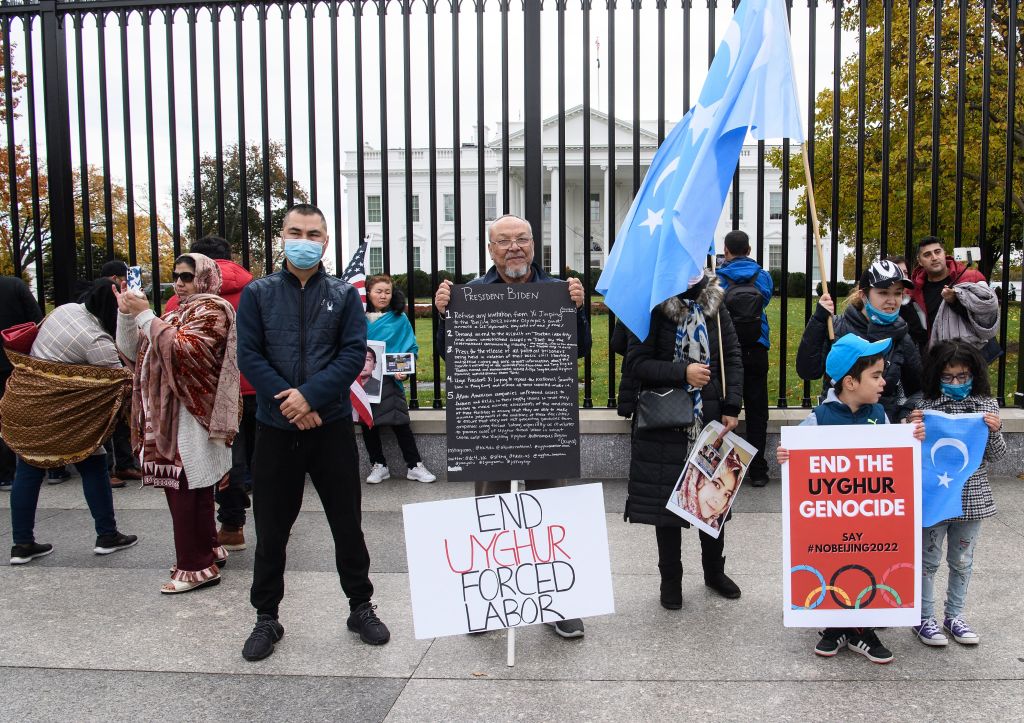
7. Blitz
It’s not often a lawmaker is confronted by protesters urging passage of a bill that lawmaker was instrumental in introducing. But it’s exactly the situation Rep. Jim McGovern found himself in during those critical early days of December.
On December 3, two survivors of China’s concentration camps—Gulzira Auelkhan, the Kazakh woman who was detained and later forced to work, and Tursunay Ziyawudun, a Uyghur woman who has testified about being horrifically tortured and raped—stood in the cold outside the Cannon House Office Building with signs advocating passage of the Uyghur Forced Labor Prevention Act. They called on McGovern and Speaker Pelosi by name to take action.
McGovern, learning they were outside the building, went out to talk with them.
“We are on your side,” he said.
He pledged the House would hold a vote on the chamber’s version of the bill the following week. It might take a few weeks to negotiate with the Senate and finalize the legislation, he said, “but it’s going to happen.”
Yet Uyghur groups, journalists, think-tankers, and Republican lawmakers weren’t totally convinced the bill had cleared the hurdles necessary to become law. For starters, the House and Senate bills still had several key differences. And it wasn’t clear President Joe Biden would sign a bill, even if compromise between the two chambers emerged. Those facts, and news stories about months of secretive lobbying against the legislation by corporations and factions within the Biden administration, fostered suspicion among the bill’s supporters about whether it would actually pass and divided the sponsors of the legislation in the final days of 2021.
Arslan Hidayat, program manager at the Campaign for Uyghurs, participated in the protest outside the House office buildings when McGovern promised action on the bill. He says the group scheduled their protests around lunchtime, hoping to catch the attention of lawmakers and staff as they left the building. Hidayat remembers one distressing part of the conversation: The advocates and McGovern went back and forth about which bill was better, and whether the House should move quickly on the Senate version or if the two chambers should enter negotiations that could take some time.
“From that exchange, I didn’t think it was going to pass,” Hidayat says. “I thought they were going to argue over whose bill they were going to pass.”
Hidayat translated much of the conversation between the camp survivors and McGovern but didn’t convey his fears about how the two chambers might fail to forge a path forward.
“When I heard that, I didn’t feel very hopeful,” he recalls. “And I didn’t really explain it to the camp survivors like that. I just told them the good news.”
On December 8, the House held a vote for the first time in the 117th Congress on its version of the forced labor bill. Members passed it with an overwhelming tally of 428-1, even stronger than the vote the year prior. Its passage should have been a moment of victory for the bill’s supporters, but the situation remained fraught.
Shortly after the vote, Rubio, other Republican lawmakers, Rogin, Sobolik, and other China policy voices claimed Democrats had approved it in the House just to keep up appearances.
“They only passed it to say they did something,” Rogin tweeted. “This is the McGovern bill. The House already passed it last year. There is no plan to reconcile it with the Senate bill by Rubio and Merkley. It’s just an alibi, unfortunately. Biden admin told dems not to send it to his desk. Sad.”
McGovern responded the next morning, pointing out that Senate Republicans had held up the bill in 2020.
“We’re already working w/ Rubio’s office to reconcile bills, just ask them,” he said. “House bill has some stronger parts. We will get it to Biden’s desk.”
During this period, from December 8 until December 14, the legislative process was at its most ridiculous and inscrutable for those observing from the outside. Partisan tensions escalated in the open, lawmakers who hadn’t played the slightest role in the bill sought to score political points, and members on different ends of the Capitol were describing two very different versions of events. Those days are also when congressional aides and the legislation’s sponsors privately finalized the text of the bill that would later become law.
After the House version passed, Speaker Pelosi didn’t send it to the Senate. Out of dozens of bills passed the same day, the forced labor measure was the only one Democratic leaders withheld. Republicans sounded alarms, anxious that Democrats were stalling the measure and sending it into legislative purgatory. Democrats said they were trying to reach a final compromise version with the Senate that they would advance.
On December 9, Rubio tweeted about Pelosi holding up the bill.
The White House and corporate interests who opposed it “aren’t going to give up that easy,” he said.
And on the morning of December 10, Rubio claimed Democrats were pretending to support the forced labor bill while using congressional procedure to make sure it “never becomes law.”
Given everything that had unfolded since the legislation’s introduction, healthy paranoia about whether the bill would actually pass was valid. But Rubio’s tweets came after serious negotiations for a compromise bill were already underway, according to people from both parties who were involved in the talks. His rhetoric wasn’t constructive as aides worked through the legislative text.
Others joined the messaging: House GOP Leader Kevin McCarthy, for one, tweeted, “Why is Speaker Pelosi dragging her feet? What does the Chinese Communist Party have on her?”
Democrats still have a bitter taste in their mouths from this time.
“It just disregards her lifetime of advocacy on behalf of human rights,” McGovern says of the attacks on Pelosi. “This would not have happened without her … She made it clear to me, and we told her, that we were in negotiations with Rubio—while he was, you know, kicking the shit out of her—that we were in negotiations with Rubio to get to a deal that they can accept, so we don’t have to have a back-and-forth.”
McGovern responded to McCarthy’s tweet. Yet he avoided getting into a direct confrontation with Rubio, even though some of his aides wanted to fire back more forcefully.
“What I’ve learned being in this business for a very long time is if you start to make things super partisan, and I start going after you, and you go after me, and we go back and forth, then we don’t want to talk to one another and then we don’t want to work together, and that would have been the worst of all possible outcomes here,” McGovern says.
“I appreciate Senator Rubio’s leadership on this,” he adds. “We’re very different people and have different political philosophies. You know, we look at the world differently. But you don’t have to agree on everything to agree on something, and we agreed on this.”
When asked about his pointed rhetoric even while his office was negotiating with McGovern’s, Rubio says “McGovern wanted it passed,” and he knew Pelosi couldn’t sit on it indefinitely.
Rubio’s deputy chief of staff, Dan Holler, adds that Rubio’s public comments were intended to apply maximum pressure; he wasn’t taking anything for granted.
Rubio and McGovern both now point to the House and Senate’s ceaseless wrangling over revenue authorities as one reason behind Pelosi’s delay in sending the bill over to the other chamber. Some House members feared that if they sent what they deemed a revenue-generating bill to the Senate without assurances from that chamber’s leaders about the process, it could present an opportunity for senators to “tag on whatever they want and send it back,” Rubio says.
“There was some of that going on.”
Behind the scenes, congressional aides were quietly negotiating a new version of the bill over phone calls and emails. This was the final sprint, and it was messy.
Staffers for Rubio, McGovern, Merkley, and Rep. Chris Smith pulled together a bill on an accelerated timeline. Lawmakers were wrapping up their work for the year, and a holiday recess was quickly approaching. Swift action would be needed if they were going to get it done. By the evening of Friday, December 10, House leadership’s plans were clear: Congressional staff would work through the weekend with the aim of finishing the text and putting an agreement on the House floor for passage on Tuesday, December 14.
One senior House aide says the legislative text came together so quickly, he was surprised Congress didn’t have to pass technical corrections to it afterward.
The aides swapped versions of the bill back and forth, tracking changes, and they shared the details with other offices to get buy-in from committees of jurisdiction.
“It was probably a typical negotiation where you agree on 90 percent and then you hold out, you fight for what you can get in the last 10 percent,” the House aide familiar with the talks says. “And then you have to compromise.”
Early on in the talks, Rubio’s team made it clear the Senate would not budge on the business disclosures the House wanted. If those provisions remained in the bill, some GOP senators would object to passage. The House aides agreed to remove them. The House also accepted the Senate’s implementation process, with a public comment period for businesses, among other steps for agencies to follow in carrying out the law. But the entity tasked with overseeing the law’s implementation would follow the House’s model, a forced labor enforcement task force established by the U.S.-Mexico-Canada trade agreement. The compromise set a 180-day timeframe for businesses to comply with the presumption that all goods made in part or in whole in Xinjiang are tainted with forced labor. Importantly, the measure retained the Senate’s clearer language targeting forced labor transfers throughout China.
The last detail negotiators nailed down concerned the standard of evidence businesses would have to meet to obtain an exemption to the presumption of forced labor. The House bill was uncompromising, calling for “clear and convincing evidence” against forced labor. Experts feared the Senate bill gave too much room for presidential administrations to water down the implementation. The final version merged the two, preserving the stronger “clear and convincing” standard.
The aides met their deadline.
On Tuesday, December 14, the House approved the compromise bill by voice vote. After more than two years of work crafting the bill, introducing it, building support for it, and moving it through both chambers at different times, the Uyghur Forced Labor Prevention Act was on the verge of becoming law at last. It was an emotional moment for the congressional staffers who helped write the legislation.
“You’re sitting there, you’re working your ass off to pass a bill you wish you never had to do,” the senior House aide says. “To be able to pass a major human rights law that had such a broad coalition had a good feeling in itself. Can we build on that? I really, really hope we can. Can we bring this to other countries, can we bring it to other issues in China? I hope we can.”
But the fact the bill had to be written in the first place “just sucks. It just sucks.”
The measure was close to final passage, although it wouldn’t be the U.S. Congress without a couple more hiccups in the legislative process.
When the Senate sponsors of the forced labor bill tried to pass the agreement by unanimous consent the next day, two Democrats blocked it for unrelated reasons. Sen. Chris Murphy of Connecticut wanted votes on dozens of Biden’s ambassador nominees that Senate Republicans had stalled. And Senate Finance Committee Chairman Ron Wyden of Oregon was seeking a yearlong extension of Democrats’ expanded child tax credit.
Merkley, the Senate Democrat who cosponsored the forced labor bill, says he was surprised by his colleagues’ objections—they hadn’t told him their plans beforehand.
“At that moment, it’s like, wait, now two of my colleagues on my side of the aisle are trying to block this,” Merkley says. “I’m like, how did this happen? Why haven’t I heard from them? But we worked it out.”
He says he and Rubio had to spend time on the Senate floor negotiating with Murphy and Wyden to move the forced labor bill. Wyden agreed not to renew his objection the next day; it was evident the expanded child tax credit didn’t have enough support to pass. Senate leaders reached an agreement, meanwhile, to advance the ambassador nominations that Murphy raised.
When Rubio went to the floor again on December 16, the forced labor prevention bill passed without opposition. A week later, President Biden signed it into law.
“I would have liked to have seen this move a bit faster,” Merkley says. “But the liberty of democracy is a complicated undertaking.”
“It’s easy to get lost in the details,” he adds. “The big picture is what matters. The big picture is America took a clear stand on human rights, and if we’re going to have credibility in the world where we wrestle with different issues, we have to be able to take clear stands.”
Rubio says in the coming months, as the Biden administration implements the presumption of forced labor, lawmakers will keep close watch over how the law is enforced. It will require constant auditing and oversight to make sure administration officials apply it as aggressively as Congress intended.
Even after lawmakers finalized the bill, business groups worked to tear it apart. Some companies and associations asked the agencies responsible for carrying out the law to delay it or create loopholes to reduce the compliance burden for the corporate community. Their influence isn’t going away, and it’s why lawmakers feel such an urgent need to make sure enforcement is powerful. The authors of the bill built in strong oversight mechanisms, though: Any exemptions Customs and Border Protection grants to the rebuttable presumption will have to be made public.
“Given the special interests that I know were opposed to this, I look back and I’m surprised that we were able to get this done,” McGovern says.
“This is a big deal. This is a consequence that China was not expecting.”
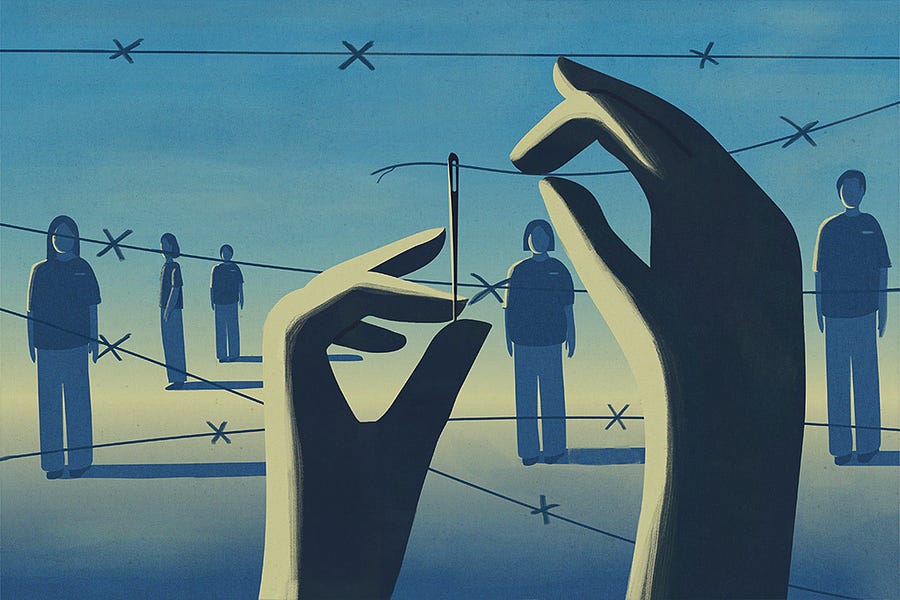

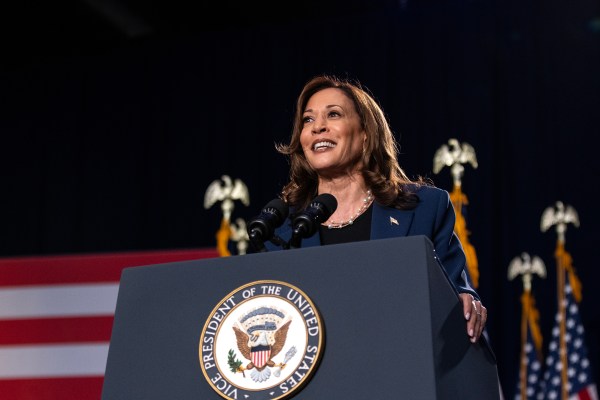
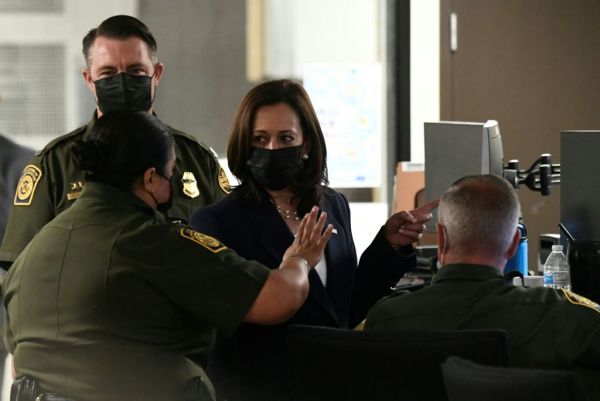
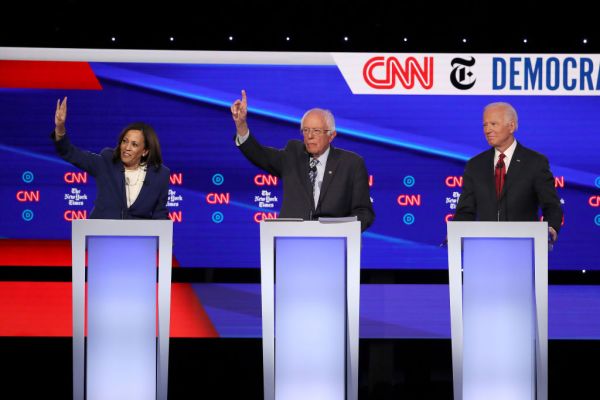




Please note that we at The Dispatch hold ourselves, our work, and our commenters to a higher standard than other places on the internet. We welcome comments that foster genuine debate or discussion—including comments critical of us or our work—but responses that include ad hominem attacks on fellow Dispatch members or are intended to stoke fear and anger may be moderated.